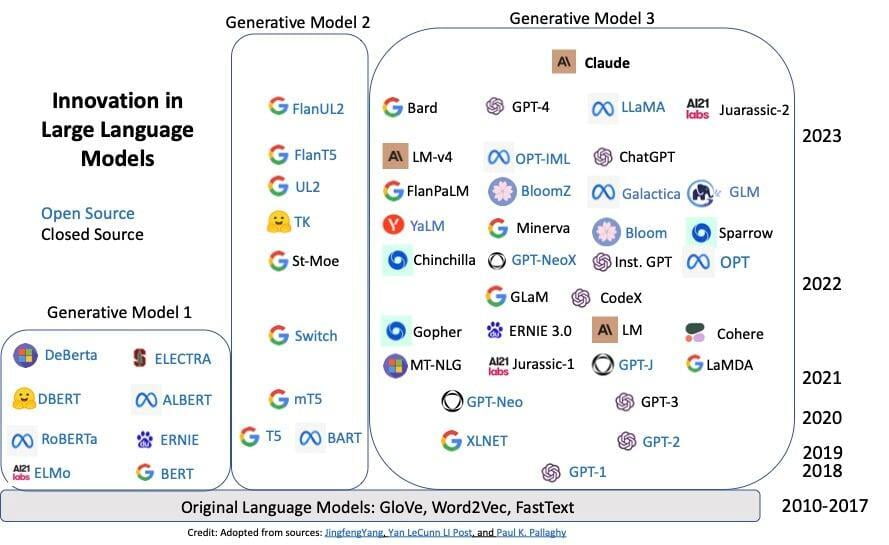
Digital HUB is an open online community of financial and data science professionals pursuing practical applications of AI in their everyday functions. Digital HUB community provides expert, curated insights into financial applications of Generative AI, Large Language Models, Machine Learning, Data Science, Crypto Assets and Blockchain.
A key focus for The Digital HUB publication is to provide best practices for the safe deployment of AI at scale such as: assessing the ability to execute, determining an organization’s digital DNA, fostering skill development, and encouraging responsible AI.
Digital HUB is an open online community of financial and data science professionals pursuing practical applications of AI in their everyday functions. Digital HUB community provides expert, curated insights into financial applications of Generative AI, Large Language Models, Machine Learning, Data Science, Crypto Assets and Blockchain.
A key focus for The Digital HUB publication is to provide best practices for the safe deployment of AI at scale such as: assessing the ability to execute, determining an organization’s digital DNA, fostering skill development, and encouraging responsible AI.
Large Language Models (like ChatGPT): Demonstrating the Transformative Capabilities of AI
Summary
To demonstrate the transformative power of Large Language Models, we look at the evolution of generative AI as shown in the figure below. Two key findings: 1) open-source vs. closed will determine the pace of AI innovation as open-source allows for a wider pool of startups and research groups; 2) one architecture out of the three main models is winning the race with a growing number of projects.
Although the main trend leans toward the larger models, for enterprise applications the models need to be fine-tuned with internal proprietary data. This path will give rise to many smaller models which may increase accuracy and grant efficiencies when applied to specific use cases.
To demonstrate the impact of LLMs, we show a use case in financial services for earnings report analysis. By applying ChatGPT/GPT-4, we can significantly streamline the investment analyst’s workflow during earnings season by summarizing earnings calls and extracting sentiment ratings, all with freely available AI tools, and without any overhead of pre-training the model in-house or labeling any of the data.
Large Language Models: Evolution and Trends
We demonstrate the evolution of the transformative capabilities of Generative AI (like ChatGPT). To understand where we are headed, we look under the covers and examine the evolution of “Generative AI” universe in the figure below.
Key findings are:
1) Open-source vs. closed will determine the pace of AI innovation. Open source allows for a wider pool of startups and research groups to contribute to the development and application of these models.
2) As you can see in the figure below, out of the three main models, one architecture is winning the race with significant number of projects.
And, for the trends:
1) In the near term, we expect AutoGPT – a multi-tasking and self-feedback version of ChatGPT – to gain traction.
2) For enterprise applications, we expect pre-trained generative AI models will be fine-tuned with internal proprietary data. This trend will give rise to many smaller models applied to specific use cases.
3) The success of generative AI will shed light on the “machine learning” methods that can be applied to many data science applications without the need for extensive resources compared to generative AI models.

Use Case: Earnings Report Analysis with ChatGPT/GPT-4
Anyone who has conducted fundamental research on public companies knows that earnings season is a harrowing experience. It typically consists of analysts working early mornings and late nights, listening to an endless onslaught of earnings calls, scribbling notes in real time, updating models with new data, and debriefing the rest of their teams. The space is ripe for innovation.
Enter Large Language Models (like ChatGPT) to summarize and extract sentiment from earnings transcripts.
First, for summarizing, we design a prompt that:
1) sets a general context (fundamental stock research),
2) describes a task (summarization),
3) underscores what is important.
To demonstrate, we chose JAMF’s 4th quarter 2022 earnings report by the CFO. Our prompt followed by the full transcript for ChatGPT/GPT-4 was:

ChatGPT returned a solid summary of the transcript given the simplicity of our prompt. The model reduced more than 1,000 words to less than 250. That’s 4x leverage. If we wanted to slim it down even further, we could rewrite the prompt to give a higher-level summary. For example:

GPT-4 further distilled the summary to 83 words (>10x leverage). Using APIs, you can automate the process and feed many transcripts to model to get reliable summaries, all with today’s available general use models like GPT-4.
Now, for sentiment analysis, using the same transcript, we can design a prompt for sentiment ranking as following:

The result by the LLM was a score of 9. The score makes sense since JAMF is a small growth company that has an optimistic management team.
Let’s look at the opposite side of the sentiment by applying the same prompt design to the First Republic first quarter 2023. Result was a score of 5.5 out of 10. To further emphasize the impact of layoffs and cutting the dividend the company experienced in the quarter, we gave the chatbot additional advice per below and asked it to reconsider:

The revised response, along with the explanation of the revision, was 4 out 10.
The predecessor to the above simple process would require highly tuned sentiment-analyzing Natural Language Processing (NLP) model that required large amounts of preprocessed data and accurate labels (positive or negative, for example) for every paragraph, or sentence, or even every word. We did not have to set anything up for this to work. We simply asked a question and gave it the raw data. That’s profound.
In conclusion, by integrating freely available AI tools, we can significantly streamline the investment analyst’s workflow during earnings season by improving efficiency in summarizing earnings calls. It also has the potential to extend insight to extracting sentiment ratings or finding specific data quickly without any overhead of training a model yourself or even collecting most of the data. All the tools shown today are free to use. By simply designing prompts, you can quickly analyze the earnings report and gain a significant boost in productivity.

